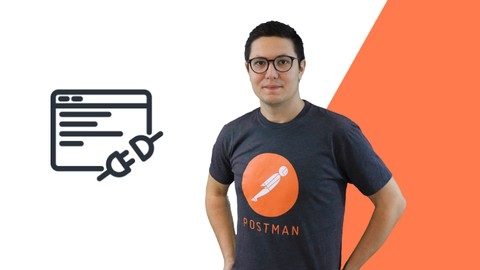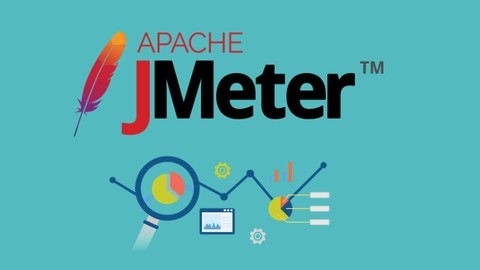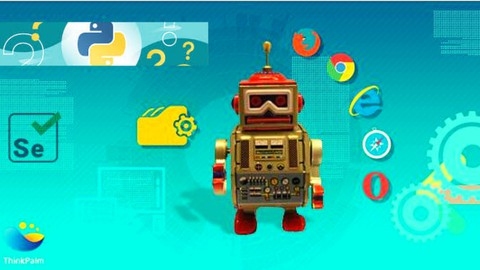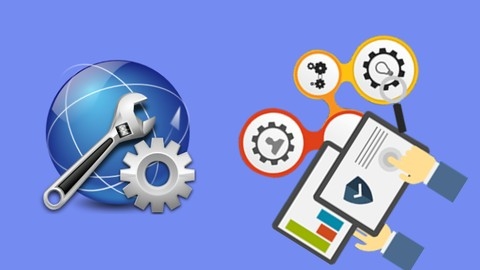API testing is a crucial aspect of software development, ensuring that the interfaces between different applications function correctly and securely.
By learning API testing, you can contribute to building robust and reliable software systems, ensuring smooth communication and data exchange between various components.
Finding the right API testing course on Udemy can be a challenge, with so many options available.
You’re looking for a program that provides a comprehensive understanding of the principles and practices of API testing, along with hands-on experience in using popular tools and frameworks.
We’ve carefully reviewed numerous Udemy courses and recommend Rest API Testing (Automation) from Scratch-Rest Assured Java as the best overall choice.
This comprehensive course covers everything from the fundamentals of REST APIs and Java to advanced automation techniques using Rest Assured, a powerful Java library for testing RESTful APIs.
While this is our top pick, we understand that different learners have different needs and preferences.
We’ve included a variety of other API testing courses in this article, covering various tools, frameworks, and learning styles.
Keep reading to find the perfect course to level up your API testing skills.
Rest API Testing (Automation) from Scratch-Rest Assured Java
This course provides a comprehensive introduction to REST API testing using Java and the REST Assured library.
You will start by learning the fundamentals of REST APIs, including HTTP methods, request/response structures, and industry use cases.
The course covers essential Java concepts to ensure you have the necessary foundation.
Next, you will dive into hands-on API testing using Postman, a popular tool for exploring and testing APIs.
You will learn how to execute various HTTP requests, such as GET, POST, PUT, and DELETE, and validate responses using Postman.
The course then transitions to automating API tests with Rest Assured, a Java library for testing RESTful APIs.
You will set up a Rest Assured project, build test scripts to add, retrieve, update, and delete data through APIs, and learn how to validate responses using assertions and JsonPath.
As you progress, you will tackle more advanced topics, such as handling dynamic JSON payloads, parameterization, and data-driven testing using TestNG.
The course also covers real-world examples, including automating Jira APIs and an e-commerce API project, where you will implement end-to-end test scenarios.
You will learn how to handle authentication mechanisms like OAuth 2.0 and explore serialization/deserialization techniques using POJO classes.
The course introduces you to powerful tools like Maven for build automation, Cucumber for Behavior-Driven Development (BDD), and Jenkins for Continuous Integration (CI).
Additionally, you will gain experience with GraphQL, a modern alternative to REST APIs, and learn how to test GraphQL queries and mutations using Rest Assured.
The course also covers integrating API tests with Excel data, core Java concepts, version control with Git, and web UI automation for OAuth flows.
Throughout the course, you will work on building a robust API testing framework from scratch, incorporating best practices, reusable components, and reporting mechanisms.
Postman: The Complete Guide - REST API Testing
This comprehensive course provides a solid foundation in API testing using Postman, catering to beginners with no prior experience.
You’ll start by learning the fundamentals of Postman, including installation, basic API requests, and an overview of APIs and Postman’s features.
The step-by-step guidance makes it easy to grasp even complex concepts.
You’ll then dive deep into crafting REST API requests with various methods like GET, POST, PUT, PATCH, and DELETE.
You’ll learn how to organize your requests using Postman collections, leverage collection variables for configuration, and master query parameters and path variables.
The course also provides practical exercises using real-world APIs, allowing you to apply your knowledge in realistic scenarios.
Next, you’ll transition into the world of API testing with JavaScript, starting with writing your first tests in Postman.
The course covers essential JavaScript concepts like variables, functions, data types, and assertions, enabling you to verify the correctness of your API responses.
You’ll learn to navigate complex data structures, like arrays and objects, and write tests that effectively analyze them.
The course then guides you through Postman’s advanced features, including environments and variables, to automate your tests.
You’ll learn to set up environments and variables for different testing stages (development, testing, production), ensuring efficient and adaptable tests.
The course also introduces the concept of test-driven development (TDD), encouraging you to write tests before your code, enhancing your testing approach.
Moving forward, you’ll explore automation techniques using Postman’s Collection Runner, Jenkins, and Newman.
You’ll learn to run collections manually, schedule automated runs, and integrate them into your CI/CD pipeline for seamless testing.
The course also covers mock servers, providing a powerful tool for testing your API without relying on a real backend, which can be highly valuable in various development stages.
Finally, the course delves into team collaboration, covering the use of Git and Postman workspaces.
You’ll learn how to create workspaces, manage user permissions, and effectively share your collections and tests with your team, promoting efficient collaboration on API testing projects.
The course’s comprehensive coverage, practical exercises, and focus on real-world scenarios equip you with the knowledge and skills to confidently tackle API testing challenges.
WebServices/Rest API Testing with SoapUI +Real time Projects
This course provides a comprehensive introduction to web services and API testing using the SoapUI tool.
You’ll start by learning the fundamentals of web services, including SOAP and REST APIs, WSDL files, and how they differ.
The course then dives into the SoapUI tool, covering its installation, basic features, and how to create test suites and cases.
You’ll learn to test SOAP web services manually, using assertions to validate responses and data-driven testing with properties.
Moving on, you’ll automate SOAP web service testing using Groovy scripts within SoapUI.
This includes parsing XML requests/responses, triggering requests from scripts, and validating responses with assertions.
The course also covers manual and automated testing of REST APIs using SoapUI.
You’ll learn REST API fundamentals, practice with examples like Google Maps APIs, and use JSON path expressions and assertions for validation.
To solidify your learning, the course walks you through designing an end-to-end API testing framework.
This involves preparing tests from API documentation, building projects in SoapUI, creating test cases, and integrating with Java, TestNG, and Jenkins for execution and reporting.
Interview questions on web services and API testing are also included to help you prepare for job interviews.
Additionally, you’ll find bonus lectures covering advanced topics like using script assertions and handling namespaces.
Quick Introduction to Postman and API Testing for Beginners
This course is a great starting point for anyone wanting to dive into the world of API testing.
You’ll begin by mastering Postman, a powerful tool for interacting with APIs.
The course covers the fundamentals of the HTTP protocol and guides you through creating various types of requests, including GET, POST, PATCH, and DELETE.
You’ll learn to organize your requests efficiently using Postman collections and delve into the concept of API authentication to secure your interactions.
The course goes beyond the basics and introduces you to essential techniques like working with query parameters and path variables to make your requests more flexible.
You’ll gain practical experience in handling JSON data, a common format for API responses, and learn to extract relevant information from them.
Automation takes center stage as you progress, equipping you with the skills to write simple JavaScript scripts for automating your tests.
You’ll discover how to use Postman’s built-in features and the Newman command-line tool to execute and manage automated tests efficiently.
POSTMAN API Testing - Step by Step for Beginners
This course is a thorough introduction to the world of API testing with Postman, offering a solid foundation for anyone looking to delve into this critical area.
You’ll start by understanding the basics of Postman, learning how to craft your first API request and exploring essential HTTP methods like POST, PUT, PATCH, and DELETE.
As you progress, you’ll discover how to organize your tests effectively using collections, leverage the power of variables to streamline your workflow, and create and manage environments for different testing scenarios.
The course emphasizes the importance of test automation, guiding you through writing basic test scripts to verify API responses.
You’ll also appreciate the inclusion of data-driven testing, which empowers you to test your API with multiple sets of data.
Learning to debug your tests using the Postman console and implementing authorization will give you the confidence to build secure and robust APIs.
The course seamlessly integrates Postman with command-line tools like Newman and Jenkins, expanding your testing capabilities beyond the graphical interface.
You’ll also learn about advanced features like creating API monitors to track performance over time, generating documentation, and even running your tests remotely.
The inclusion of an introduction to SOAP API testing further broadens your skillset, preparing you to work with various API types.
This comprehensive approach makes this course a valuable resource for both beginners and those seeking to solidify their understanding of API testing with Postman.
Postman - Learn API Testing from Scratch with Live Projects
This course provides a comprehensive introduction to API testing using the Postman tool.
You’ll start by learning the basics of Postman, including its features and how to create collections and HTTP requests.
Next, you’ll dive into working with variables and environments in Postman, which are crucial for automation testing.
You’ll learn how to create variables with different scopes and use them to dynamically generate values in your requests.
The course covers Postman scripting in depth, including different types of scripting editors and how to write assertions for validating responses.
You’ll learn how to run collections as automated tests and validate JSON responses against input data from other APIs.
Data-driven testing is also covered, where you’ll learn how to perform data-driven testing from CSV files and handle error scenarios in your API tests.
The course teaches you how to prepare smart execution workflows using Postman scripting.
You’ll then learn how to handle OAuth 2.0 authenticated APIs, including different grant types and the authorization flow.
There’s a dedicated section on parsing complex nested JSON responses using JavaScript functions like filter, map, and reduce.
The course also covers JSON schema validation, creating mock servers in Postman, and testing SOAP web services with XML response validation.
You’ll learn about Newman, a command-line tool for running Postman collections, and how to generate HTML reports.
Integration with Jenkins is covered, allowing you to run Postman tests through Jenkins and create parameterized jobs to switch environments dynamically.
Team collaboration and version control features in Postman are also explored.
The course includes practical examples like an e-commerce API with session tokens, attachments, and form data, as well as testing GraphQL APIs using Postman.
Optional sections cover JavaScript fundamentals and API testing basics.
Learn JMeter - Performance and API Testing
This comprehensive course is your launchpad to mastering JMeter, a powerful tool for performance testing websites and applications.
You’ll start with the fundamentals, learning how to install JMeter on both Windows and Mac and building your first performance test using core elements like Thread Groups, Samplers, Listeners, and Configuration elements.
Beyond the basics, you’ll delve into crucial aspects like Assertions, ensuring your application’s performance meets expectations.
The course covers Listeners for visualizing test results and Timers for controlling the pace of your tests.
You’ll then explore Logic Controllers, which empower you to create complex test scenarios with features like Loops, Recording Controllers, and Throughput Controllers.
This course also prepares you for real-world scenarios.
You’ll learn to build distributed load tests, test database performance with JDBC, and execute JMeter from the command line for efficient result analysis.
You’ll even gain proficiency in testing FTP uploads and downloads, utilizing Pre- and Post-Processors, and exploring JMeter’s Plugins Manager for extended functionality.
The course goes further, teaching you how to find and extract dynamic data from your website or app using Correlation techniques and how to parameterize your tests for greater flexibility and reusability.
You’ll learn the value of Data Driven Testing with CSV files, harness JMeter’s built-in Functions and Variables, and create reusable Templates to accelerate your testing process.
You’ll be equipped to confidently navigate the complex world of performance testing and deliver high-quality, reliable web applications.
Robot Framework with Python- Selenium/API Automation Testing
You’ll start by learning the fundamentals of Robot Framework, including installation, configuration, and basic test creation.
The course then delves into web automation using Selenium, guiding you through the process of interacting with web elements and handling various scenarios like synchronization and error handling.
You’ll also explore data-driven testing techniques, which allow you to execute tests with multiple data sets, ensuring your application’s robustness.
The curriculum emphasizes practical skills by teaching you to create custom keywords using Python libraries, extending Robot Framework’s capabilities.
It then introduces the Page Object Design Pattern, a structured approach to organizing your tests, promoting code maintainability and reusability.
You’ll learn how to run your tests in parallel using the Pabot plugin, significantly accelerating your testing process.
The course then moves on to API testing, demonstrating how to interact with APIs using GET, POST, and DELETE requests.
Finally, you’ll learn to integrate your tests with Jenkins, a popular CI/CD tool, automating your entire testing workflow.
The course also includes a section on Python basics, providing a foundational understanding of the language underlying Robot Framework.
While this section may be helpful for beginners, it could benefit from a more in-depth exploration of Python concepts relevant to automated testing.
However, while the course offers a good starting point for beginners, more experienced users may find some of the content to be introductory.
Additionally, the course’s focus on practical skills could be further enhanced by including more real-world examples and case studies.
REST API Testing, Automation using POSTMAN
This comprehensive course equips you with the skills to confidently test REST APIs using Postman, a widely adopted industry tool.
You’ll begin by mastering the fundamentals of Postman, from installation to exploring its powerful features.
You’ll dive into the heart of API testing by making requests using diverse methods like GET, POST, PUT, PATCH, and DELETE.
The course guides you through crafting requests, interpreting responses, and even creating clear documentation for your APIs.
You’ll learn about crucial concepts like environment variables and collections, which allow you to organize and streamline your API tests.
The course goes beyond the basics, delving into authentication techniques like Basic Authentication, OAuth, and even CSRF, essential for securing your API interactions.
The course doesn’t shy away from advanced topics like scripting in Postman.
You’ll write scripts to automate repetitive tasks, manage variables effectively, and perform assertions to validate the accuracy of your API responses.
You’ll also discover how to leverage Newman to execute Postman collections directly from the command line, offering greater flexibility and control.
Finally, you’ll be introduced to version control using Git and GitHub, essential for collaborative API projects.
The course goes further, showing you how to seamlessly integrate Postman with Jenkins, a popular CI/CD tool, to automate your testing workflow and achieve continuous integration.
To solidify your learning, you’ll apply your newfound expertise to test the Walmart Search API, providing a practical capstone project that demonstrates real-world application.
This course offers a robust path to becoming proficient in API testing with Postman, equipping you with the knowledge and skills to confidently tackle any API testing challenge.
Learn API Testing using Postman, SoapUI & RestAssured
This comprehensive course equips you with the skills and knowledge to become a proficient API tester.
You’ll embark on a journey starting with the fundamentals of API testing and gradually progress to mastering industry-standard tools.
You’ll begin by mastering Postman, a popular tool for crafting dummy APIs and interacting with JSON and JSON Path.
You’ll learn to utilize JavaScript for validating responses, scripting in Postman, and chaining requests efficiently.
The course dives deep into data-driven testing, utilizing both JSON and CSV files.
You’ll gain expertise in handling file uploads and downloads, exploring various authorization types, and working comfortably with cURL.
You’ll also master validating XML responses, converting them to JSON, and documenting your testing process for seamless collaboration.
The course then transitions to SOAPUI and Ready API, widely used tools for web service testing.
You’ll delve into the intricacies of assertions, properties, and data-driven testing using multiple data sources.
You’ll even have the opportunity to test real-world APIs from popular services like Flicker and Google Maps, gaining practical experience with industry-relevant scenarios.
The final stage of the course focuses on RestAssured, a powerful Java library for API testing automation.
You’ll learn to set up your environment, send HTTP requests, parse JSON and XML responses, and manage file uploads and downloads.
You’ll also gain a deep understanding of schema validation, serialization, deserialization, and authentication types.
The course provides hands-on experience with a RestAssured framework project, ensuring you learn best practices and industry standards.
To support your API testing endeavors, the course includes a robust introduction to Java.
You’ll cover essential concepts like data types, operators, control statements, arrays, strings, object-oriented programming principles, inheritance, interfaces, packages, exception handling, and data structures.
This foundational Java knowledge is invaluable for building automated API testing solutions.
Finally, the course seamlessly integrates your API testing efforts with Git, GitHub, and Jenkins, popular tools for version control and continuous integration.
You’ll learn to manage your code, collaborate effectively with others, and automate your testing process for increased efficiency and reliability.
This comprehensive course offers a well-structured path to becoming a skilled API tester.
You’ll gain the necessary tools, knowledge, and practical experience to succeed in this dynamic field.










